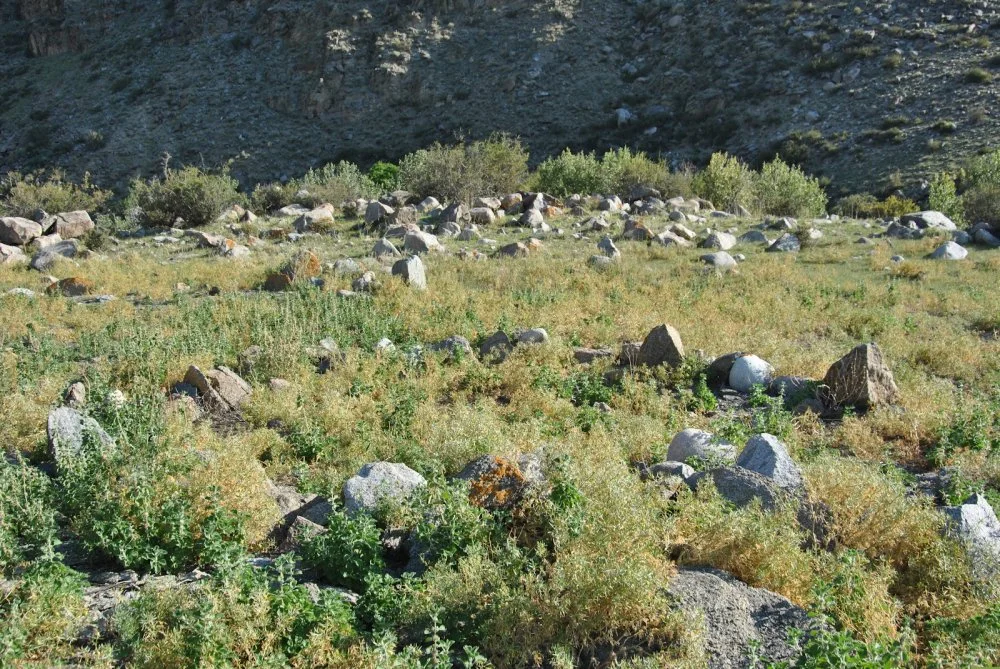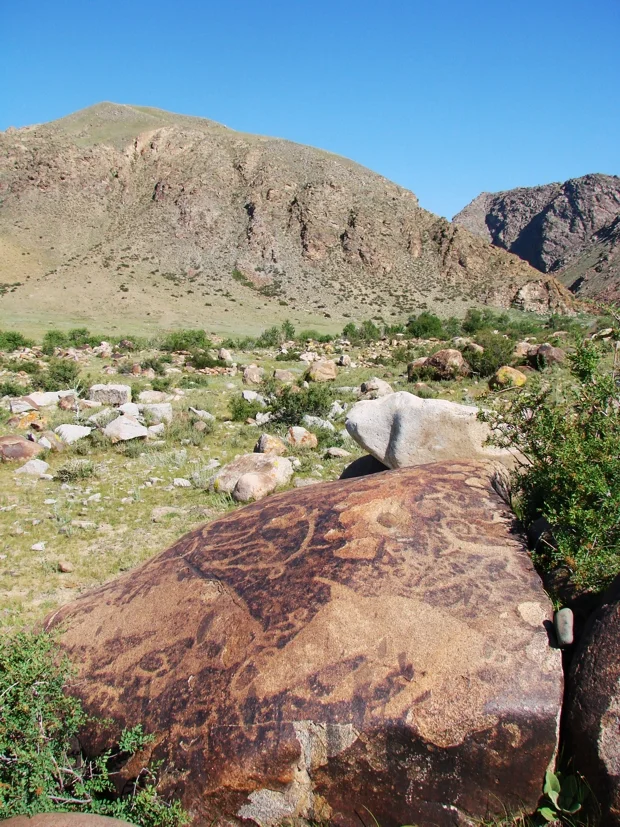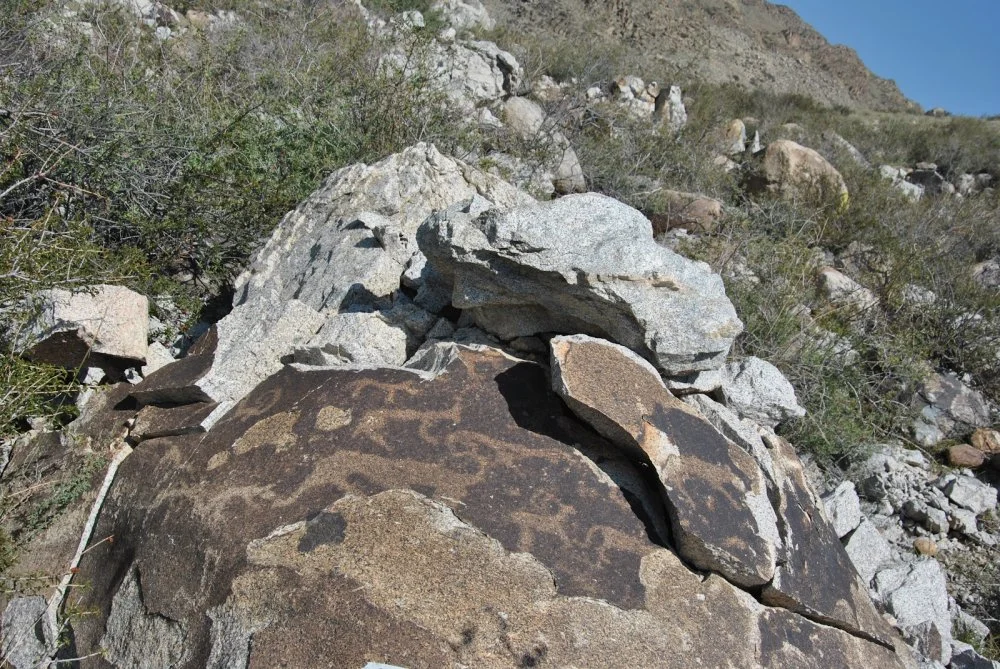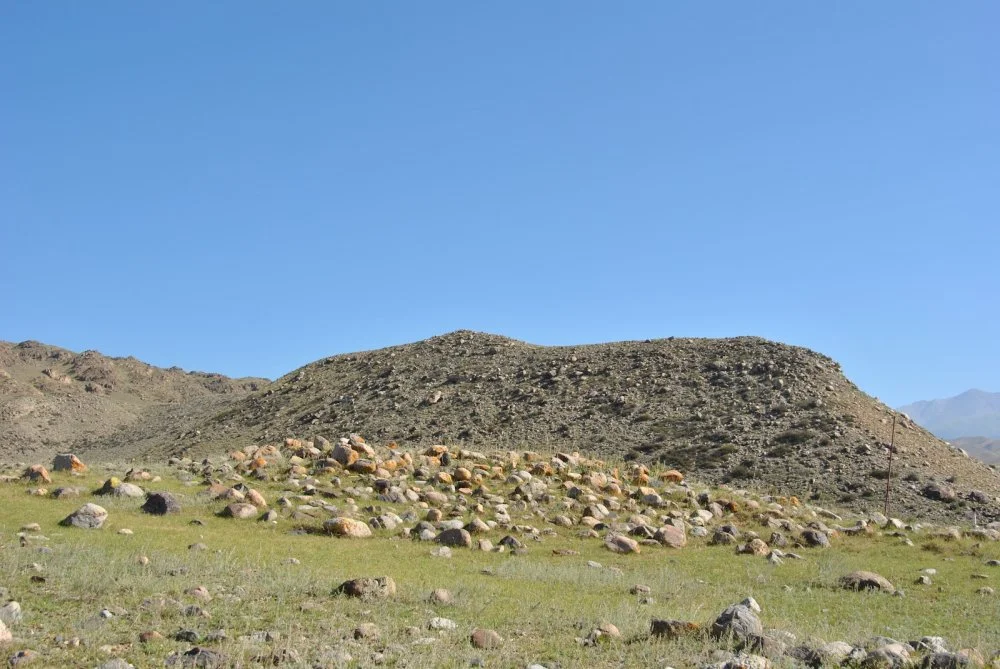Some of the petroglyphs in the cluster of Malyi Koitas in the Almaty region were destroyed during the construction of a dam at the confluence of the Big and Small Ösek rivers. Among the stone ruins on the river terrace, you can still find some fragments with images of hooves and horns. However, even the most reckless vandals couldn’t bring themselves to demolish the rock that bears the images of giant wild boars—the scene was far too masterful to ruin.
The ancient inhabitants of this area chose a remarkably convenient and beautiful site for the sanctuary, offering a stunning view of the surrounding ridges and the Usek River valley. Across the Small Ösek are Saka settlements and a burial ground. It’s unlikely that this river was more shallow millennia ago, but it has been proven that people not only managed to traverse it but also somehow drove livestock across. Near the sanctuary, there’s an old cattle trail, marked with figures of hoofed animals, leading to the jailau, the summer pasture.

Small Koitas cluster/Olga Gumirova
The sanctuary contains drawings from the Bronze Age, dating back between 2000 and 1500 BCE, but most of the petroglyphs are from the Early Iron Age, spanning from the fifth to seventh centuries BCE to the third to fifth centuries CE.
The hallmark of the sanctuary is the stone featuring the boars. The figures are etched in multiple layers on a massive boulder, smoothed by a mountain river to a perfectly glass-like finish and enhanced with a patina. The lower layers, barely discernible now, appear to date back to the Bronze Age, while the famous boars belong to the Saka period.

Petroglyph of the Boar/Olga Gumirova
Images of wild boar in the applied arts of the Early Iron Age are ubiquitous, but such depictions on rocks are extremely rare. As for those like the ones in Malyi Koitas, crafted with remarkable skill, they are truly unique.
Boars were depicted earlier during the Bronze Age, but this symbol gained particular significance in the Early Iron Age. It was used to decorate weapons, warriors’ armor, ritual vessels, altars, and religious scenes on rocks.
There is a theory that the cult of the boar, observed by archeologists across a vast area stretching from the Middle East and the Black Sea to China, and including Kazakhstan, was associated with the warrior class. Hunting boars was always a difficult and dangerous task, making such trophies especially valuable.
This beast embodies strength, fearless bravery, and ferocity. While it is aggressive and dangerous to its enemies, it serves as a dependable protector and safeguard for its own, particularly for its offspring. The image of the boar as a lone, fearless warrior was reinforced by the fact that boar tusks were often used to make armor, especially helmets, as even mentioned in the Iliad.
Unfortunately, scholars have not yet fully reconstructed the mythology of the nomads of the Early Iron Age—the Saka, Scythians, Sarmatians, and Massagetae—and we can only speculate about the role the boar played in their beliefs as we only have access to indirect sources. It seems that in the nomads' mythology, as reflected in their visual art, the image of the boar carries a certain duality.

Petroglyph of the Boar/Olga Gumirova
On the one hand, it is a dangerous and fierce beast, a representative of the underworld and almost the embodiment of universal evil. On the other hand, it symbolizes prosperity and reliability.
The composition of the scene from Malyi Koitas is complex and multilayered, making a definitive interpretation impossible. The boars, of which there is an entire herd on the stone, do not appear aggressive—their heads are lowered to the ground, tails raised, as if they are peacefully grazing in a meadow.

Small Koitas cluster/Olga Gumirova
However, we should not forget that the stone is located at the edge of the sanctuary, near the crossing to the other bank, where the settlement and burial ground are located. It is possible that in the past, the wild boars served as a kind of talisman or warning that the inhabitants of this valley were under reliable protection.




